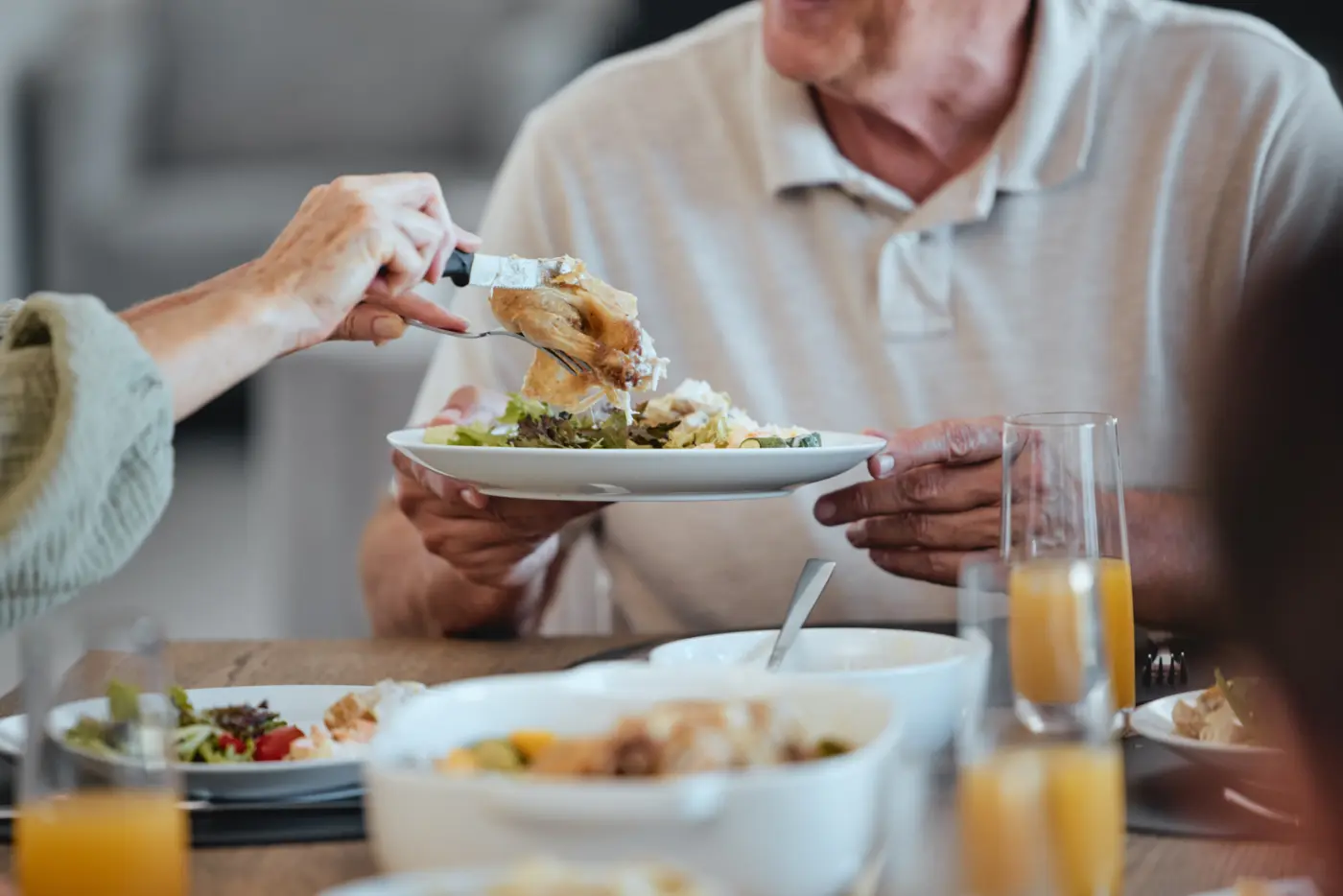What does a healthy meal look like?

Knowing where to start when it comes to healthy eating can be a challenge, especially as we age. Arvida Head of Nutrition, Julia Scott gives some advice on what's best for your plate!
Always aim for half of your plate to be vegetables or fruit. You'll find that vegetables and fruit are rich in the nutrients you need for optimal functioning of all body processes: vitamins, minerals, antioxidants and phytochemicals. Aim to eat a rainbow, i.e. as many colours as you can at every mealtime.
Protein should cover a quarter of your plate
The strength and size of muscles decline with ageing which contributes to a loss of mobility, function and ability to perform activities of daily living. Protein intake can prevent muscle loss. Good protein sources include lean meat, poultry, fish, milk, cheese and yoghurt. Salmon and sardines are packed with heart-healthy omega 3 fats. Legumes, eggs and nuts are also packed with protein. It’s important for older adults to eat protein throughout the day, because the digestive system can only absorb a little at a time. Aim to include protein with every meal and snack.
Carbohydrates should cover a quarter of your plate
For consistent energy and to feel full after meals, you need to include high fibre carbohydrates with each meal, i.e. wholegrain bread, brown rice, wholemeal pasta, oats, kumara or potato.
Use fat as a garnish or dressing
Don’t skip the fat. Healthy fats are essential for hormone production, healthy skin, providing energy and protecting organs. They also contain vitamins (A,D,E and K) and assist nutrient absorption. Good choices include olive oil, flaxseed oil and avocado oil.
Include some dairy products
To ensure you get enough calcium, it’s recommended you consume three servings of dairy products per day. These fall into the protein foods category and can include milk, cheese and yoghurt. Other foods high in calcium include dark green leafy vegetables, almonds, tofu, soy beans and sardines.
You can find out more information about healthy eating here:
Older Adults - NZ Nutrition Foundation
Healthy Diets For Over 65s. - Heart Foundation NZ
